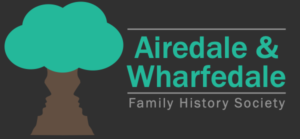Subject: History of Education in 19th and early 20thCenturies
Speaker: Edgar Holroyd-Doveton
The Wharfedale Family History Group met at the Salem Church Hall on Thursday 5th April. Chairman Lynda Balmforth opened the meeting and welcomed guest speaker Edgar Holroyd-Doveton whose presentation on the History of Education in 19th and early 20thCenturies included some excellent historic film sequences.
He explained how an eclectic mix of educational establishments existed prior to the formalisation of State Education following the Education Act of 1870 (which incidentally was known as the Forster Act after its sponsor MP William Forster 1818 – 1886 owner of Greenholme Mills and resident of Burley). Early 19th century schools were either public, grammar or charity and wealthy families educated their children at home with a tutor or governess. By mid-19th century ‘public’ schools had become elite private schools for the wealthy and grammar schools catered for the children of wealthy middle class families. There were also smaller private schools (usually run by charities), Dame schools, British & National schools, Sunday schools and Ragged Schools. Prior to 1870 however, many working class children did not attend school at all because they were working.
Public schools were originally located in rural areas and were actually ‘public’ before they developed into expensive fee paying schools for the wealthy. Such schools mainly taught literacy to boys who boarded there. Preparatory schools also developed to cater for younger wealthy boys before they went to public school. Grammar schools were usually located in towns and their original purpose was to teach Latin to the sons of middle class tradesmen and professionals. The curriculum gradually broadened to include Ancient Greek, English language and geography. These schools were fee paying like the public schools but after 1870 a number of free scholarship places were made available. Private schools were often established where there was no available grammar school and these were usually run as a business in a master’s large house. Fees for such schools restricted their availability to the wealthy.
Ragged schools (a movement begun by John Pounds 1766-1839) were established in some places to provide free education (mainly reading) to poor, destitute and often homeless children. There were 250 of these in London prior to the 1870 Act. Sunday schools were often the only available form of schooling in many places where children were taught reading and writing. Their emphasis upon religious instruction only really began after 1870. National Schools were established and run by the Church of England whilst British schools were set up in opposition by non-conformists. Both these types of school were absorbed into the State education system after 1870 and Board schools (run by an elected board) came into being to provide more school places.
Despite the 1870 Act many children, particularly in the industrial areas of West Yorkshire and Lancashire continued to work in the factories and mills, only attending school as ‘Half Timers’ until as recently as 1921. Throughout the 19th and early 20th centuries educational reform was resisted not only by industry owners but also by parents who needed their children’s wages in order to survive. Where available, school log books and admission registers can provide useful information for family historians.
President Stanley Merridew gave a vote of thanks following questions and comments from the audience. The Group’s next meeting will take place 7.30 pm on Thursday 3rd May at the Salem Church Hall, Main Street, Burley when Sue McGeever will present her talk, Letters from a Faraway Laddie, from the Nidd to the Nile. Members and non-members all welcome, refreshments provided.
